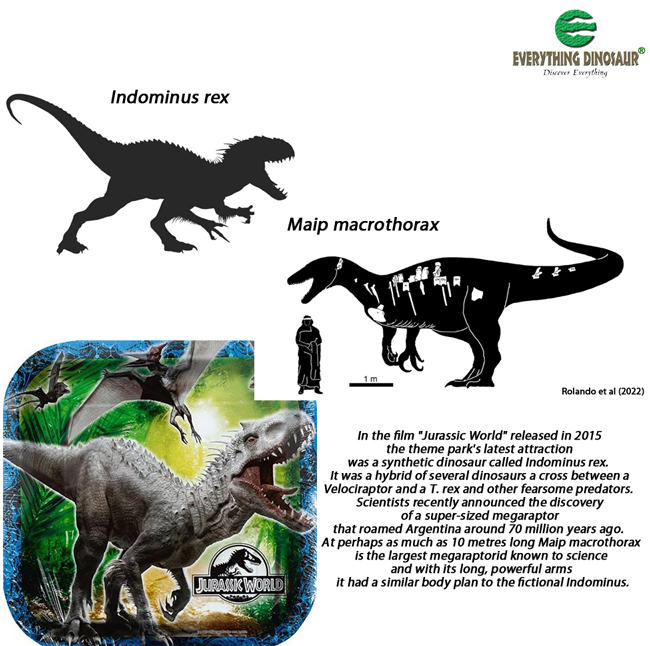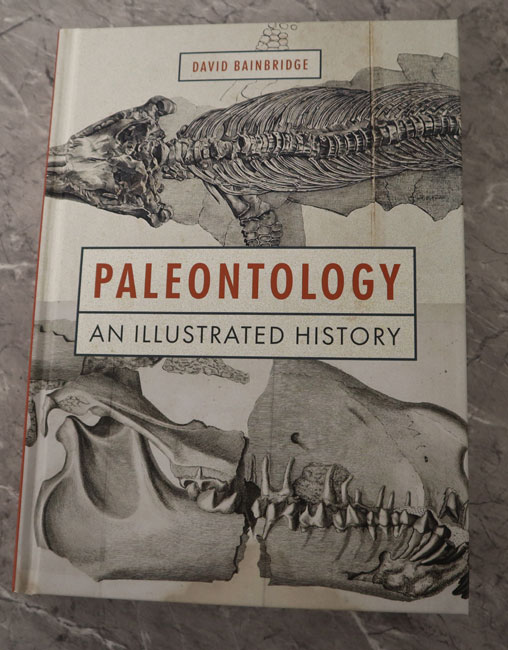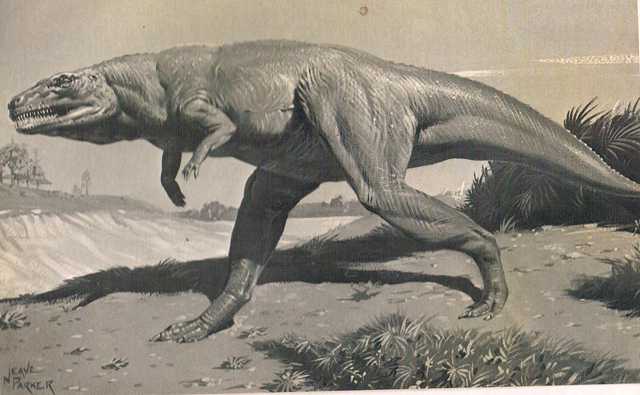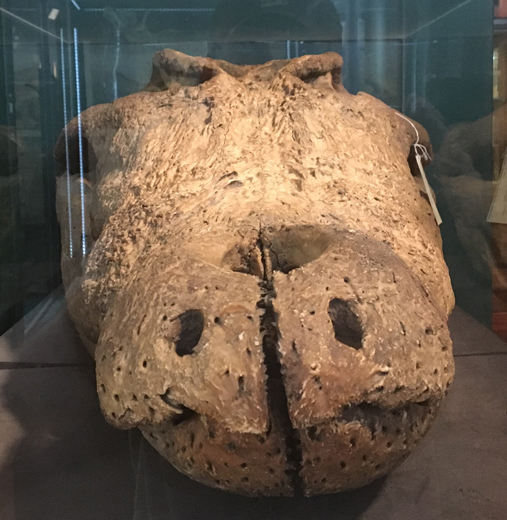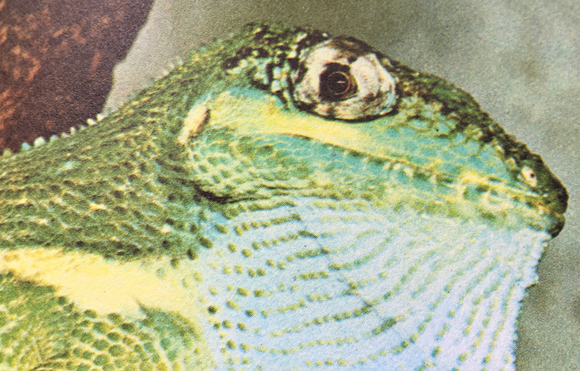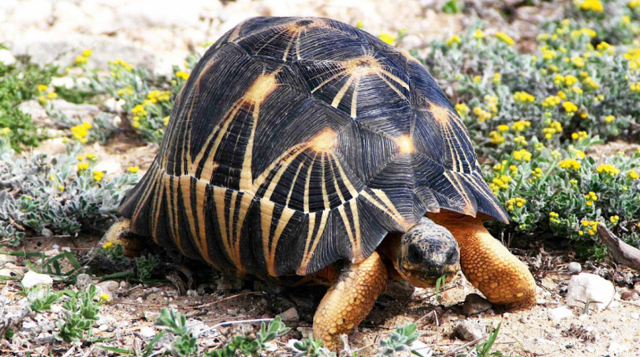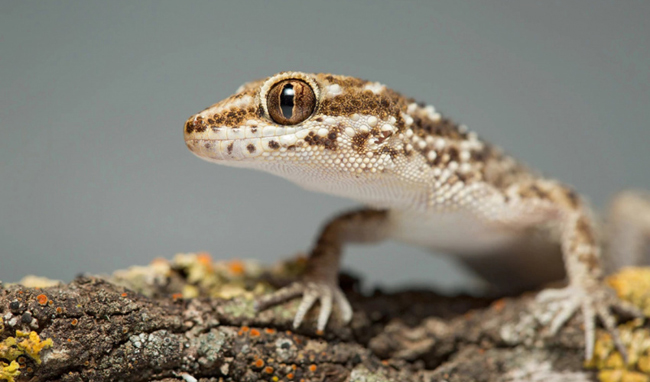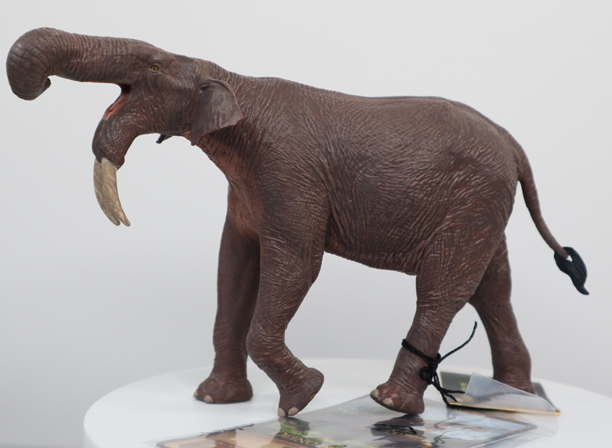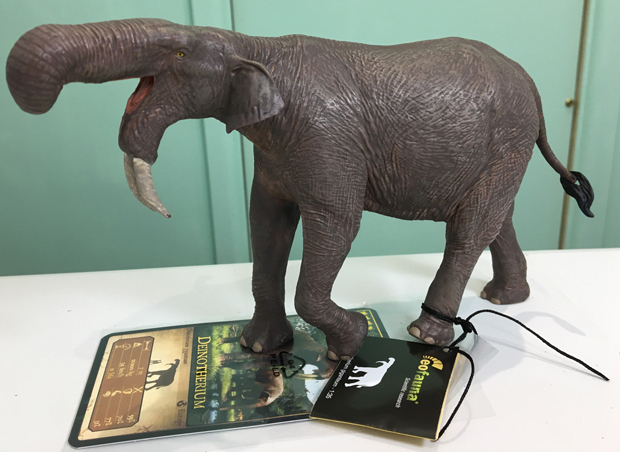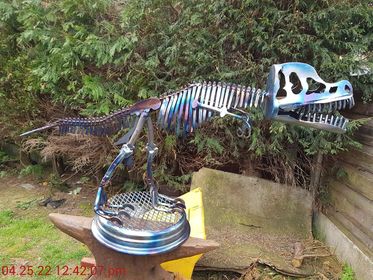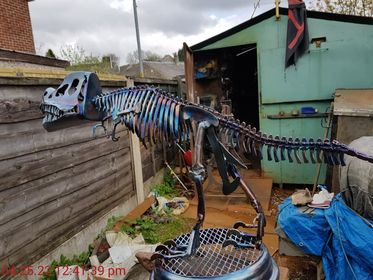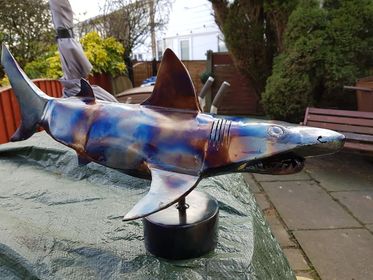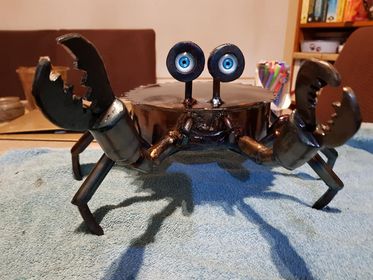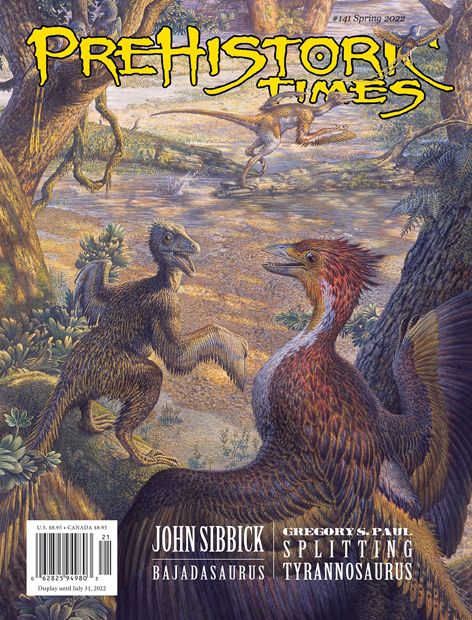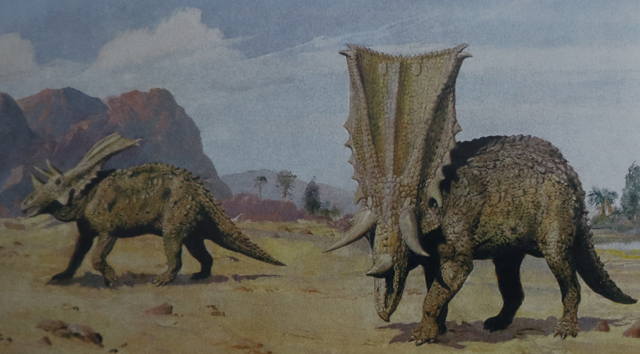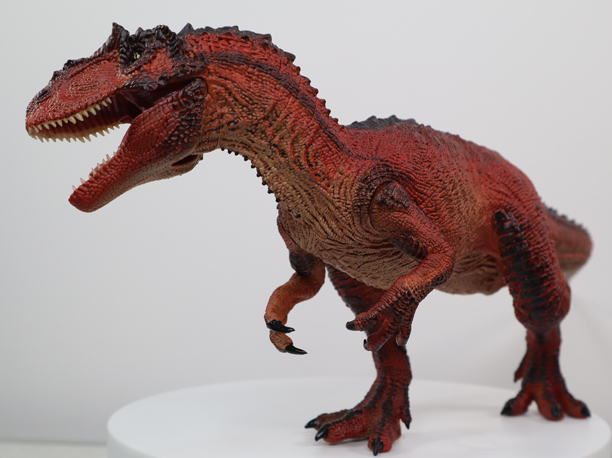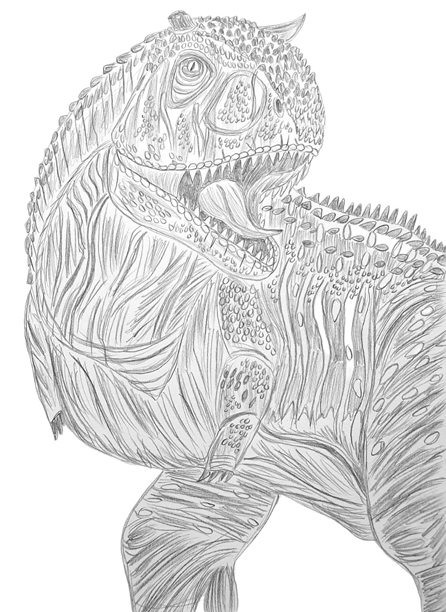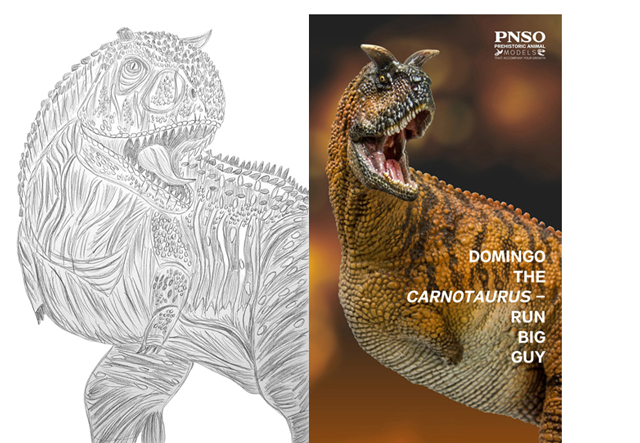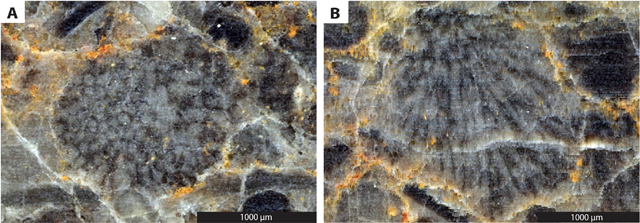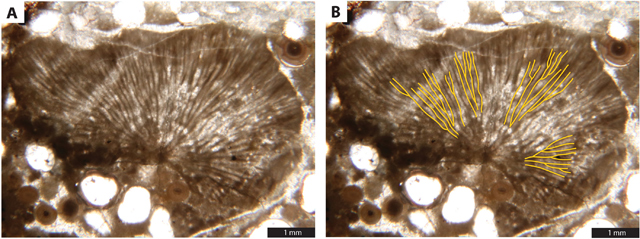Fragmentary bones excavated from Santa Cruz Province, Patagonia (Argentina), have revealed the presence of a super-sized megaraptorid theropod in the Late Cretaceous (Maastrichtian faunal stage). The new dinosaur, named Maip macrothorax is estimated to have been at least 9.5 metres long. It represents the biggest member of the Megaraptoridae described to date and its discovery lends support to the theory that these types of dinosaurs were not members of the Allosauria clade, but they were coelurosaurs and therefore related to the dinosaur lineage that gave rise to the birds.
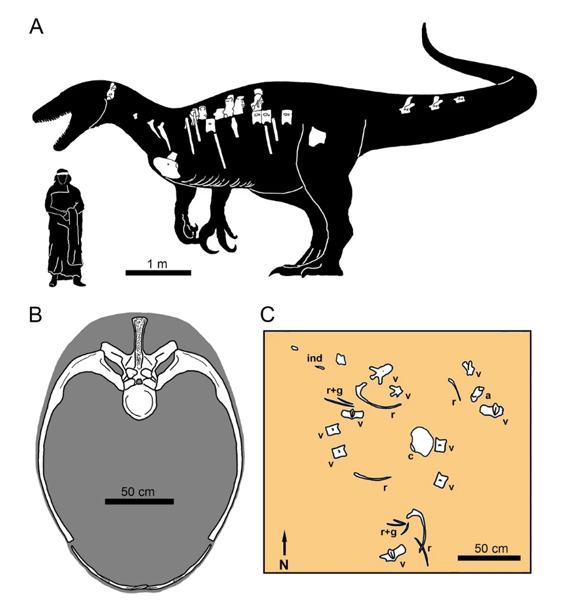
Silhouette of Maip macrothorax showing the preserved bones in white (A). Reconstruction of the thoracic cavity of Maip (B) at the level of dorsal vertebra 6 (D6). Drawing of the excavation of Maip showing the original disposition of the bones (C). Abbreviations: a, axis; c, coracoid; ind, indeterminate bone; g, gastralia; r, rib; v, vertebrae. Picture credit: Rolando et al. Note scale bar in (A) = 1 metre, and (B,C) 50 cm.
Picture credit: Rolando et al
The fossil material was collected from exposures of the Chorrillo Formation approximately eighteen miles southwest of the city of El Calafate (southwestern Santa Cruz Province, Patagonia, Argentina).
The “Shadow of the Death” which “Kills with Cold Wind”
The Megaraptora clade are mostly known from fragmentary and very incomplete specimens. The fossils of Maip macrothorax (pronounced my-eep mac-row-thor-ax), although representing only a small portion of the overall skeleton, consist of a single cervical vertebra (C2 the axis), several dorsal vertebrae, ribs, the left coracoid, a partial toe bone, fragments of the scapula and caudal vertebrae.
By studying these bones the researchers, that included Alexis M. Aranciaga Rolando from the Museo Argentino de Ciencias Naturales “Bernardino Rivadavia” (Buenos Aires, Argentina) and Makoto Manabe from the National Museum of Nature and Science (Japan), postulate that the Megaraptora are not archaic members of the Allosauroidea but members of the Coelurosauria clade, that group of theropods more closely related to birds than they are to other members of the Avetheropoda lineage.
Maip macrothorax
The genus name is from the native Aónikenk people of Patagonia (known as the Tehuelche in western culture). Maip is an evil spirit said to roam the Andes and its name means “the shadow of death” which “kills with cold wind”. The specific name derives from the Latin for big thorax. The rib bones indicate that this dinosaur was deep chested with a large thoracic cavity more than 1.2 metres in width.
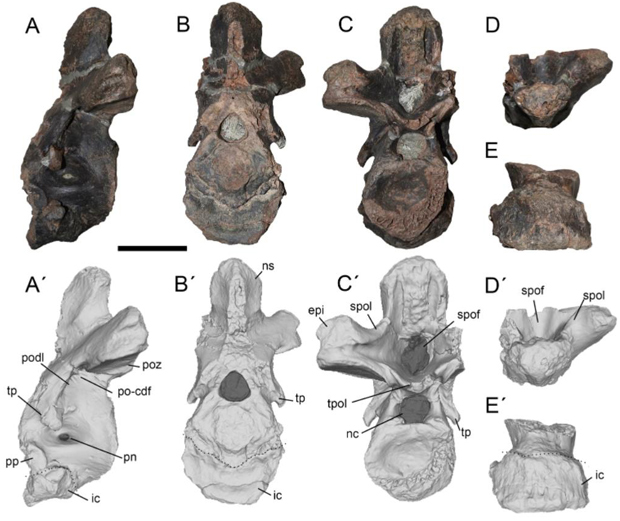
The second neck bone of Maip macrothorax (axis – C2) shown in lateral (A), anterior (B), posterior (C) and dorsal (D) with accompanying line drawings. Note scale bar = 5 cm. Picture credit: Rolando et al.
Picture credit: Rolando et al
The researchers propose that with the extinction of the carcharodontosaurids, many of which were apex predators on the southern continents, the megaraptorids evolved becoming larger, heavier and more robust, eventually filling the niche of top predator in many parts of the Southern Hemisphere during the Late Cretaceous.
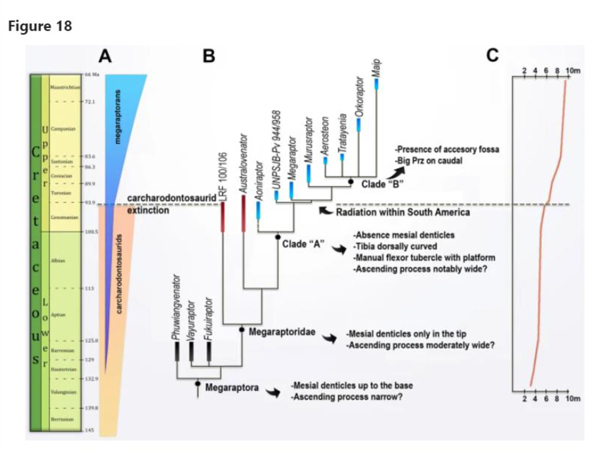
Evolutionary trends of the Megaraptora. Evolutionary trends of Megaraptora. Temporal scale and bars depicting currently known temporal distributions of Megaraptora and Carcharodontosauridae (A). Time-calibrated phylogeny of megaraptoran taxa (B), showing most relevant genera from Asia (black bars), Australia (red bars) and South America (blue bars). Main synapomorphies supporting each node are indicated by arrows. Tree topology follows the results of the present work. Curve showing the increasing in average body size of megaraptorans during Barremian faunal stage through to the Maastrichtian (C). Picture credit: Rolando et al.
Picture credit: Rolando et al
The Rise of the Megaraptorids
Around 94 million years ago (Cenomanian faunal stage of the Late Cretaceous), there was a global extinction event which led to the demise of the Carcharodontosauridae. As far as Everything Dinosaur team members are aware, there are no reliable fossil records for the presence of carcharodontosaurids in South America beyond the Turonian faunal stage (the stage that followed the Cenomanian). An absence of apex predators permitted the megaraptorids and the abelisaurids to evolve to fill this niche in the Southern Hemisphere, whilst the tyrannosaurids become bigger and occupied the apex predator role in Asia and North America.
Maip macrothorax estimated at around 9.5 metres in length, lived some sixteen million years after the next largest megaraptorid (Aerosteon – A. riocoloradense). The body size of megaraptorids during the Early Cretaceous when the carcharodontosaurids still roamed seems to have been limited to around six metres in length, suggesting that these theropods were secondary predators. However, with the extinction of the carcharodontosaurids, body size in the Megaraptoridae increased and by the very end of the Cretaceous (Maastrichtian faunal stage), a body length in excess of ten metres seems plausible.
To read the Everything Dinosaur blog post that reported the discovery of these bones in 2020: Scientists Discover Giant Megaraptor.
Helping to Resolve the Phylogeny of these Enigmatic Theropods
Although the bones only represent a small part of the total skeleton and no cranial material has been identified, Maip macrothorax is the most informative megaraptoran known from the Maastrichtian stage. Phylogenetic analysis has placed this new taxon together with other South American megaraptorans in a monophyletic clade (they shared a single, common ancestor), whereas Australian and Asian members constitute successive stem groups.
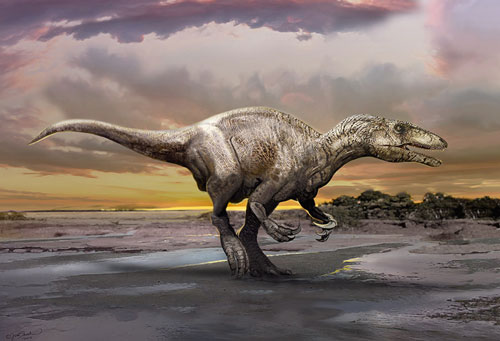
A leggy, Late Cretaceous carnivore (Murusraptor). Picture credit: Jan Slovak (University of Alberta).
Picture credit: Jan Sovak (University of Alberta).
For models and replicas of theropods and other prehistoric animals: Wild Safari Prehistoric World Models and Figures.
The researchers propose that the South American megaraptorids differ from more basal megaraptorans such as Fukuiraptor from Japan and Australovenator from Queensland, Australia in several anatomical features and the South American lineage evolved into much bigger, more robust and powerful predators.
The scientific paper: “A large Megaraptoridae (Theropoda: Coelurosauria) from Upper Cretaceous (Maastrichtian) of Patagonia, Argentina” by Alexis M. Aranciaga Rolando, Matias J. Motta, Federico L. Agnolín, Makoto Manabe, Takanobu Tsuihiji and Fernando E. Novas published in Scientific Reports.
The Everything Dinosaur website: Dinosaur Toys.
